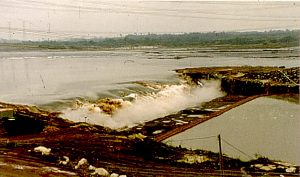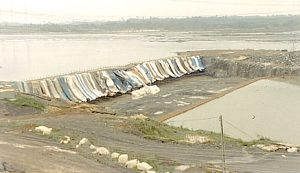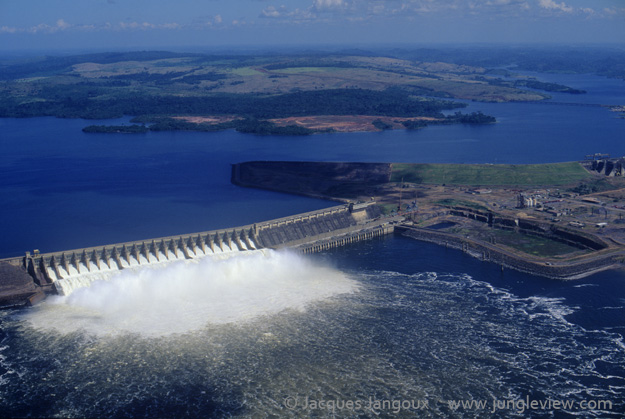Tucurui Hydro Project
The Tucurui Dam is a concrete gravity dam on the Tocantins River located near Para, Brazil. This was the first large-scale hydroelectric project in the Brazilian Amazon Rain forest. This dam can produce 8,370 megawatts and was built in two phases from 1975 to 2010.
During construction of phase 2 of the dam one goal was to install new turbines and double the electric generation capacity of the dam. In addition to this, a new power house and completion of the lock system was scheduled with a total budget of $1.35 billion dollars.
Konya Industries was the lead on the blast design and highlighted below is one of the major shots, the opening of the 1000 foot long dike which would let a 45 foot high wave into the generators. In addition to the difficult control of the wave, power lines stood just 20 meters above the blast area.
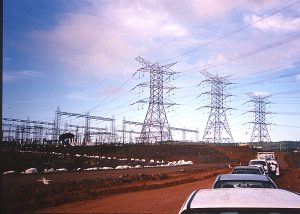
Project Goals
- Design a blast to minimize the wave produced when the dike is opened
- Blast a trench behind the dike to catch broken rock and ensure rock does not strike the generators
- Ensure no rock damage the overhead powerlines
- Design the blast so ground vibration and air overpressure does not damage any nearby structures
Trench Blasting
The first step of this project was to blast a trench into the tailrace immediately behind the dike. This wide trench would have to contain all broken rock from the blasting of the dike. Movement of this rock mass was calculated both from blasting and from water pushing the muckpile towards the trench. The other goal of this portion was to move the entire rock mass into the trench without having to use any dredges to minimize the cost.

Dike Blasting
The 1000 foot long and 45 foot high dike was holding back enough water that in modeling of the wave striking the generators, the generators would suffer permanent damage. It was then necessary that not only the dike be sufficient demolished using explosives and that all rock would be moved, using only explosives, into the trench but also that the dike be blasted sufficient to allow for the water to slowly seep through and not generate a large wave.
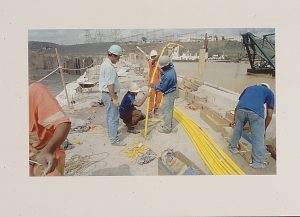
Project Completion
With Dr. Konya leading the design of this project and utilization of new blasting techniques the trench and dike were successfully blasted. All rock was deposited into the trench and there was no damage to the generators or electric lines, successfully completing the blasting to the project engineers specifications.
